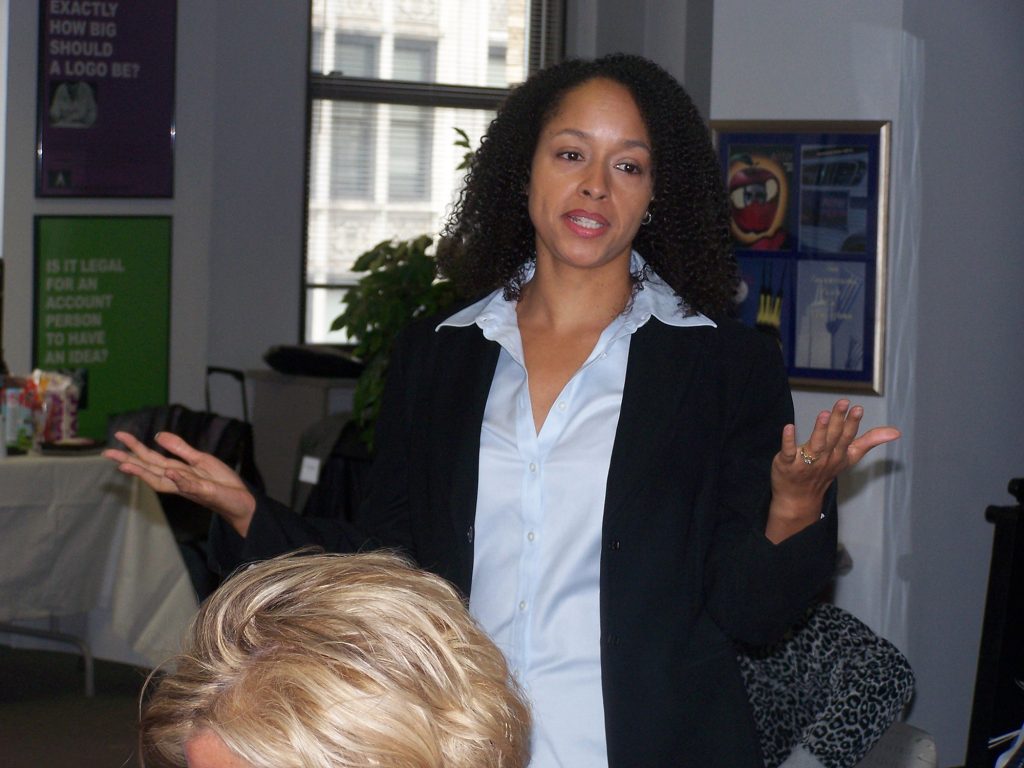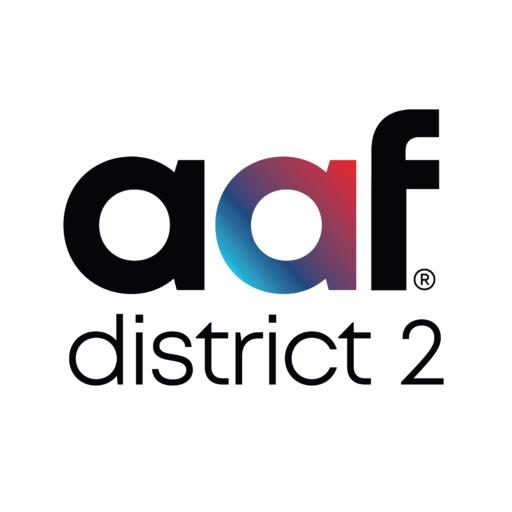One of AAF’s major objectives is to recognize excellence and encourage high standards among industry professionals. The Club Achievement Competition is designed to recognize outstanding accomplishments of AAF-affiliated advertising clubs and to showcase the programs and projects that these clubs undertake each year.
Club Achievement



Club Achievement: Entry Criteria
Structure
The AAF National Club Achievement Competition recognizes achievement in five categories:
- Club Operations
- Cornerstone Initiatives & Events
- Membership Development & Communications
- Programs
- Public Service
These categories were chosen to reflect the areas of operation of local ad clubs. Each category is judged by a separate panel of professionals with expertise in that specific field.
Clubs compete within their membership size divisions. These divisions provide for a more equitable competition and thus for an opportunity for any size club to win. Ad 2 clubs compete in a separate division regardless of membership size.
Advertising clubs are segmented and compete based on five membership size divisions as follows:
- Division I—500+ members
- Division II—250–499 members
- Division III—100–249 members
- Division IV—up to 99 members
- Division V —Ad 2 Clubs
Each panel of judges reviews and scores each entry in each of the membership size divisions. First-, second-and third-place awards are given in each division for each category, at the discretion of the judges. A club and president of the year award are designated in each division to the club with the highest total points. Awards are presented annually at ADMERICA, AAF’s national conference.
Benefits
Gaining district and national recognition is but one of the many benefits of entering the Club Achievement Competition. Entering the Club Achievement Competition is an excellent way to document your club’s activity in any given year. This can prove to be a useful tool for self-evaluation and goal setting for the coming year. Entering consistently provides a historical record of the progress your club is making.
Eligibility
All clubs and federations affiliated with the American Advertising Federation and in good standing may compete within their membership size division in any or all of the eight categories.
Club or federation projects implemented from March 10, 2019 to April 1, 2020 qualify for the 2019–2020 competition.
Preparing to Enter
Role of the Club Achievement Chair: The AAF recommends that each club appoint a Club Achievement Chair. The immediate past president is an excellent choice for this position. The Club Achievement Chair should be the official liaison to AAF headquarters. It is this person’s responsibility to familiarize the appropriate committees within the club, with the competition categories and the documentation necessary for entry. It is recommended that all Club Achievement entries be assembled at the same time so that materials can be shared and/or redistributed to different committees for entries in other categories. It is therefore best that the Club Achievement Chair coordinate this activity.
Reviewing Competition Rules and Guidelines: In the fall, guidelines and category summaries are sent to the presidents, executive directors and club achievement chairs of all local ad clubs, to use as a model to start preparing entries for competition. The individual responsible for your Club Achievement Competition entries should make sure that he or she views the current rules, categories and guidelines for the competition, located on aaf.org. The competition may change from year to year, which makes a current set of competition guidelines important. This information should then be passed on to the appropriate chairs whose committees correspond to the Club Achievement categories. Below are the category summaries, which contain points and topics to be covered in the narrative. Each chair should be familiar with the summaries for his or her corresponding category.
Entry Content
Entries are divided into two sections: narrative and collateral. The narrative section is used to describe the activities or projects pertinent to the category, and the collateral section contains printed material in support of the narrative. All collateral material must have been produced since March 10, 2019.
Narrative: The narrative is used to describe your club’s activity in each area outlined on the category description sheet. Judges evaluate objectives versus results. It is therefore advisable to document the planning meetings where goals were outlined and a plan of action was drawn up and to outline how these goals and objectives were met. Statistics are an excellent way to provide a concrete measure of performance and a record of the club’s progress and growth.
For example, in discussing membership, a statement of growth in your club or federation should include the number of new members who joined in the past year, the type of attendance at your programs and the number of members versus guests. Also, consider the following questions: Are the same members coming back each time or is attendance different at each event? Are new members getting involved? Do past officers stay involved? How do your current members compare to last year’s? What is the difference in the growth and profitability of the club? What is your total count for participation in all events, compared with that of the previous year?
The narrative section cannot exceed eight double-spaced pages, and be typed in 11pt Times New Roman font.
Collateral: The collateral portion of the entry contains material that directly supports the points in the narrative. Please keep in mind that judges look for the degree to which the collateral material documents the narrative of the project or activities. Collateral pieces may include, but are not limited to, press releases, flyers, newsletters, testimonial letters, thank-you letters from public service projects, new member pieces, etc. All collateral material, in all categories, must have been produced.
It is a good idea to keep digital copies of all publications, news releases, meting notices, etc., for use when compiling books. The membership and program chairs should also track attendance figures to monitor progress.
The narrative may be at the beginning of the book (all together) or integrated within the collateral section. If you decide to keep the two elements separate, label the collateral as “exhibits” and refer to them in the narrative. Integrating narrative has the advantage of providing a better flow of information.
Also note, the same narrative and collateral can be used in several different categories. For instance, the advertising education projects that your club undertakes are often eligible in the programs category as well. Your club newsletter should definitely be included in the communications category, but it may also be collateral materials for the membership category. There is a different panel of judges for each category, so judges will not review the same material twice.
Compiling Entries
When to Start: Ideally, preparations for the Club Achievement Competition should begin as soon as the previous year’s entries have been sent. It is therefore advisable that the “old” committee chairs continue collecting material for next year’s competition until the new chairs are elected, in office, and ready to assume this responsibility.
Timeline: Once the current year’s deadline has been announced, you should plan three months out to begin writing the narrative. Be certain to proof all entries for spelling and grammar errors. Additionally, confirm all exhibits are labeled as stated in the narrative for consistency purposes. If you adhere to this timetable, there is sufficient time to collect any extra material needed to support the narrative.
Once the committee chairs have gathered the material for each entry, it is advisable that the final compiling be done jointly. Although it is not necessary for books from the same club to be uniform, it may be helpful to have this sort of “workshop” atmosphere for the sharing of information and collateral material. Once each book is assembled, ask another committee member to look it over. Make sure that all of the competition guidelines have been met.
Entry Format
Entries must be submitted as a PDF file, each with the official entry form at the beginning of each file.
To ensure equitable judging of all entries, strict adherence to the length of the narrative is required. This should be submitted electronically as a companion document to the PDF.
First place winners in all categories agree to allow the winning entry to be shared on the AAF website following the recognition of winners at ADMERICA.
Judging
The AAF secures a separate panel of judges for each category of the competition. Each panel is composed of individuals who have professional expertise in the category that they are judging. Each judge reviews and scores all entries using the following criteria and point values. Total points equal 100.
- Outline and relevance of goals = 10 points
- Methods used to achieve goal(s) = 25 points
- Results of methodology = 30 points
- Degree to which the collateral material documents the narrative description of the project or activities = 35 points
Awards
First-, second- and third-place awards will be designated in each division within each category at the discretion of the judges.
A Club and President of the Year Award is given to the club in each division whose accomplishments—based on the first-, second- and third-place awards it receives—are outstanding. Each Club of the Year will receive $1,000.
Each first-place award receives 30 points. Each second-place award receives 20 points. Each third-place award receives 10 points.
Ties will be broken at the discretion of the judges.
Awards will be presented at a special awards luncheon at ADMERICA, AAF’s national conference, June 2020 in Palm Springs, CA.
Entry Fees
$75 for the first entry, $40 for each additional entry. Checks should be payable to the American Advertising Federation and must be received by 5pm ET, April 1, 2020.
Please send checks to:
American Advertising Federation
Attn: Club Services
1101 K Street, NW
Suite 420
Washington, DC 20005
Categories of Entry
Club Operations
Policies, procedures and leadership development that contribute to the operations of a club or federation.
Cornerstone Initiatives & Events
Designed with the intention of promoting diversity & multiculturalism, advertising education, awareness and activism with regard to government relations and championing creative excellence through the American Advertising Awards.
Membership Development & Communications
Activities designed to enhance a local advertising club or federation and its membership recruitment, retention and involvement and the communication collateral materials and/or websites produced and distributed for these purposes.
Programs
Quality programming that fosters actively interested membership, well-attended meetings and membership growth.
Public Service
Projects that effectively use advertising techniques to support local, regional and/or national programs on behalf of public interests and/or for community betterment.
You will find additional entry details for each category on the Club Achievement Submission Form.
Entry Deadline
All entries must be received by the AAF, no later than 5pm ET, April 1, 2020. For questions regarding the entry and following competition, contact Dawn Reeves [email protected].
Submitting Your Entries
Once your entry is prepared, please fill out the entry form and upload your PDF at the link below.


